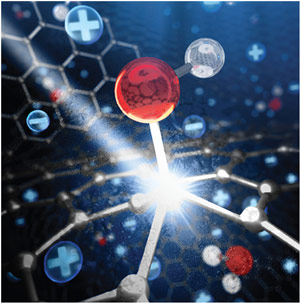
Future technology will require energy storage systems that have much larger storage capability, rapid charge/discharge cycling, and improved endurance. Progress in these areas demands a more complete understanding of the processes involved in energy storage, from the atomic scale to the device level. Now, using soft x-ray absorption spectroscopy (XAS) under operating conditions (“in operando”), users of the Molecular Foundry, ALS and NERSC have found that the interfacial electric fields generated during charging of the electrode/electrolyte interface of a supercapacitor can induce changes in the structure and bonding of its graphitic carbon electrodes. The research could lead to better, more reliable strategies for improving the capacity and efficiency of electrical energy storage systems needed to meet the burgeoning demands of consumer, industrial, and green technologies.
A team led by researchers from Lawrence Livermore National Laboratory (LLNL) has developed an in operando XAS capability at the ALS that is tightly coupled with theoretical modeling efforts at LLNL and the Molecular Foundry. For this work, the team used its recently developed three-dimensional nanographene (3D-NG) bulk electrode material as a model graphitic electrode. Graphitic supercapacitors are ideal model systems to probe interfacial phenomena because they are chemically relatively stable, extensively characterized experimentally and theoretically, and are highly relevant technologically.

